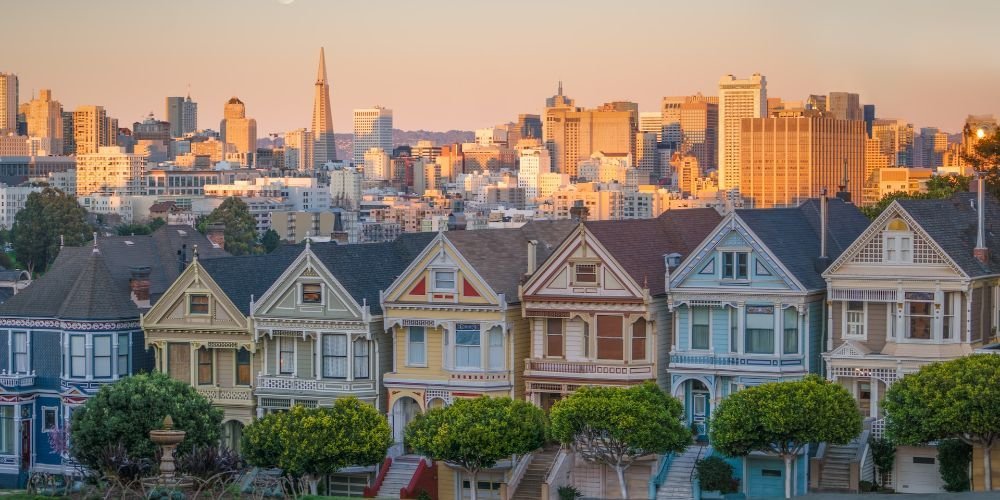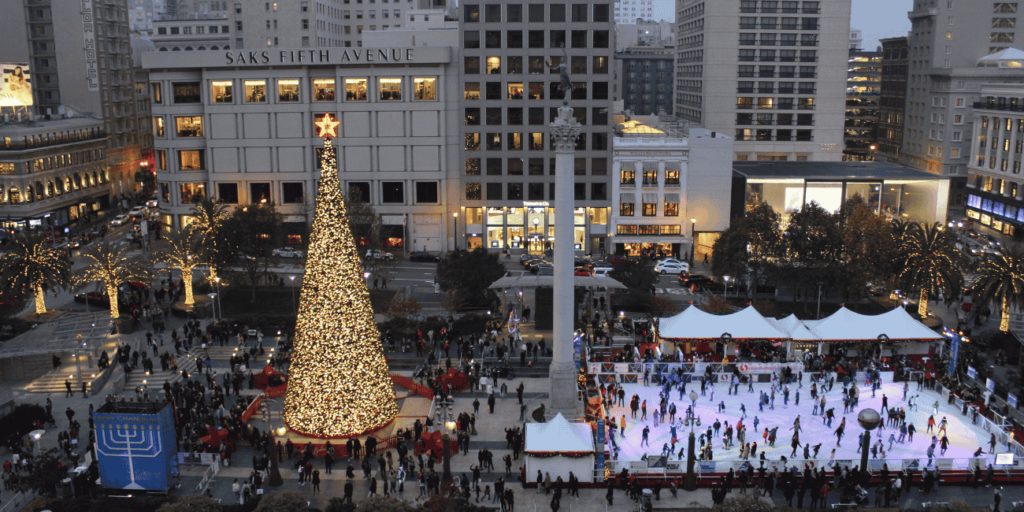San Francisco’s Biotech Rejuvenation: Life Sciences 2.0

While challenges persist in the San Francisco Bay Area real estate landscape, the life sciences sector continues to shine. Major corporations are funneling substantial investments into new laboratory facilities, positioning it as a beacon of hope.
Amid ongoing tech layoffs, the potential for revitalizing the city’s job market through exciting, high-profile investments looms large.
“The Bay Area would love to see, say, 5% of the employment base switch from tech to life sciences,” remarked BJ Feller, Senior Vice President and Managing Director at Northmarq, to Bisnow.
With life sciences continuously advancing in therapies, technologies, and lab infrastructure, the Bay Area, marked by its expanding project portfolio, seems well-prepared to weather recent economic challenges. Despite the tech sector’s struggles impacting the city and commercial property values, biotech remains robust, claiming one-third of the national life sciences venture capital funding in the previous year.
Jon Needham, Vice President at BentallGreenOak and an investor in the Bay Area’s life sciences real estate, highlights the diverse landscape, from striking glass towers reminiscent of Kendall Square in South City to adaptable, single-story warehouses in San Carlos, ideal for biomanufacturing. This diversity underscores the market’s vitality.
Despite tightened funding, cautious venture capital practices, and the typical fluctuations associated with the budget-conscious tech hub, the Bay Area concludes the year on a strong note and looks forward to a promising future. Cresa data reveals that the region delivered 109,000 square feet and witnessed an absorption of 802,000 square feet in the fourth quarter, marking an increase from the previous quarter, with a 7.2% vacancy rate. Currently, there are 5.4 million square feet under construction, including 2.1 million square feet undergoing redevelopment.
JLL Life Sciences Research Analyst Emmanuel Enabulele anticipates a plethora of exciting new projects and sustained growth throughout 2023.
This performance stands in stark contrast to San Francisco’s office market, where Mid-Peninsula lab leasing activities alone reached 536,000 square feet in the last quarter, surpassing the 362,000 square feet of office space leased in the same period, according to JLL. The life sciences sector in the region has now posted seven consecutive quarters of positive net absorption.
According to Andrew McShea, Director of Life Science Research & Analytics at Cresa, although lab sublease availability is on the rise, it does not cause the same level of concern as observed in downtown San Francisco’s office market.
Jon Needham refers to this current phase as ‘life science 2.0.’ The building trends of the past five years primarily followed a ‘build-it-and-they’ll-come’ approach, driven by the region’s and the industry’s rapid growth. This sharply contrasts with the present sentiment, where moderated growth aims to balance supply and demand. Today, amidst increasing rates, more prudent funding practices, and a demand for tailored and biomanufacturing-enabled lab spaces to support cell-and-gene therapy and mRNA research, the Bay Area’s technological prowess and thriving market position it well to meet evolving demands.
Needham notes a shift in the types of buildings being developed, emphasizing efficiency and technology’s role in maximizing limited space. The focus is on consolidating various research components under one roof, including biological-based R&D, chemistry, and pilot-scale manufacturing.
South San Francisco serves as the epicenter of the region’s lab development, with several noteworthy projects either in progress or completed. These include clusters of waterfront, Class-A facilities known for their rich amenities. One significant life sciences deal in the past year was private equity firm GI Partners’ acquisition of a $388 million portfolio from Alexandria Real Estate Equities, with a significant presence in South San Francisco. Additionally, pharmaceutical giant Eli Lilly announced plans to lease substantial space in the city last autumn.
IQHQ, headquartered in San Diego, unveiled its intentions to construct 900,000 square feet of lab space near a Caltrain station, following its $215 million land acquisition in 2021. Meanwhile, Lane Partners initiated the Southline Phase 1 project, comprising two buildings spanning 670,000 square feet. DivcoWest continues to make progress with its conversion project on Shoreline Boulevard in South San Francisco. Kilroy is nearing completion of the massive Kilroy Oyster Point Phase 2, totaling 865,000 square feet and a $940 million investment, with approximately 2 million more square feet planned for future phases.
Moving north from Oyster Point, the Genesis Marina development, Phase 3 by Bain Capital in Brisbane, is set to open this year, with most of the space pre-leased by Freenome. Furthermore, Baylands Development Inc. announced ambitious plans last September for an $800 million mixed-use project called 9000 Marina, encompassing 1 million square feet. This development includes 657,000 square feet designated for office and lab space on a man-made peninsula.
According to McShea, the opening dates for these projects may be rather optimistic due to challenges in construction financing and materials. Delays are anticipated, with some projects potentially extending to the end of the year or early 2024. For instance, there is now a one-year lead time for generators.
However, Needham suggests that these delays could have a beneficial effect on the Bay Area’s life sciences supply. He notes that providing tenants with more flexibility in their choices is a positive outcome. This flexibility is expected to contribute to maintaining a healthy market over the next five years.

Significant developments have also taken place in regions further south on the Peninsula, in Alameda County in the East Bay (with 1 million square feet under construction), and in Berkeley, where warehouse and industrial spaces are being transformed into labs and biomanufacturing facilities. Spur Capital recently acquired a 10-acre parcel in a former manufacturing area in Berkeley, aiming to establish a megacampus. This area is witnessing the initiation of over 1 million square feet of massive life sciences redevelopment projects.
In contrast to regions like Boston, which has substantial biomanufacturing capacity in development, the Bay Area lags slightly in this critical aspect of the life sciences ecosystem. McShea envisions a future where more such developments occur along the Hayward-to-Fremont corridor in the East Bay.
San Carlos, where BentallGreenOak collaborates on a biomanufacturing-focused redevelopment with Greymark, stands out as an excellent candidate for adaptive reuse due to its industrial history. Needham highlights that this site, like many others in the region experiencing increased interest for biomanufacturing purposes, is well-equipped for development. It offers the necessary size, scale, and flexibility to cater to various clients, from contract manufacturers seeking to enter the region to small firms and startups looking to enhance their production capabilities and internalize operations.
The aftermath of the tech downturn and the sluggish downtown office market has triggered discussions regarding increased developments and renovations in San Francisco. Mayor London Breed has even expressed interest in bringing more life sciences projects to the city to counter the decline in the commercial real estate market. However, this endeavor faces challenges, including the high cost of development, quality-of-life issues, and the proximity of other submarkets to talent centers like Stanford and Berkeley.
Andrew McShea notes, ‘It’ll be interesting to see if the city can secure major anchor tenants. But until a compelling case is built, it will be a tough proposition.’
Nevertheless, there are indications of a changing landscape. Neighborhoods such as Mission Bay and areas near the University of California San Francisco have seen increased interest in life sciences projects due to flexible PDR zoning regulations. DivcoWest’s acquisition of the former Old Navy HQ in Mission Bay, for $356 million, points to a potential life sciences renovation opportunity, with tenants like SmartLabs incubator operator. Paceline’s 1155 Bryant development has attracted foodtech tenants like Mission Barns, and Vir Biotechnology signed a 134,000-square-foot lease at the 1800 Owens project in January.
Alexandria Real Estate Equities also maintains a presence in Mission Bay, specifically at the 88 Bluxome St. site, which may be divested due to renovation challenges. However, developing in the city, rather than on the peninsula, poses a challenge, according to Chairman Joel Marcus. He cites Salesforce’s departure as another indicator of a troubled downtown development market. ‘It has issues,’ he commented. ‘We wouldn’t be investing in the city, generally, in commercial space.’
Scott Stone, Managing Partner at Cresa, suggests that cities will need to exert more effort to attract development. He points to Vacaville, which has streamlined the approval process for life sciences projects to attract the growing market for biomanufacturing space, and Berkeley, which has implemented zoning and regulatory reforms under the Keep Innovation in Berkeley initiative.
While the market may face significant funding challenges, its growth potential suggests the possibility of another boom when conditions improve. McShea notes, ‘There’s gonna be a significant amount of dry powder from investor capital. That dry powder from biotech-friendly investors should translate well once things start to take off.




